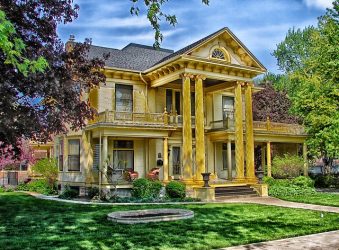
BUILT TO LAST: CHOOSING PIERS FOR YOUR HOME IN CHARLOTTE
If you are in the process of building a home in Charlotte, NC, then you know there are many decisions to process. Some of the decisions will affect the way...
If you are in the process of building a home in Charlotte, NC, then you know there are many decisions to process. Some of the decisions will affect the way your home is perceived (aesthetics), while others will affect its permanence (structural integrity). The piers of your home fall into this latter category, and are an integral facet of how your home hold ups in the years to come.
WHAT ARE HOME PIERS?
By definition, a pier foundation is one that is built of circular or square columns that are located in strategic points around the perimeter of a home. They can be made from a variety of materials, and the type of material will affect implementation and durability. The columns are secured into the ground using treated wood posts or steel rods, then connected to the beams onto which the home is build.
The use of pier and beam system allows for an 18” high crawlspace beneath home, thus providing easy access to several of the home’s primary systems.
PIER AND BEAM MATERIAL OPTIONS
When you decide on having your Charlotte home structured on a pier and beam foundation, it is important to choose the best material you can. There are several options, so be sure check them all out.
Pillars – Typically formed from concrete and built during the construction phase of the home (though they can be used a t a later date), this type of pier is one of the oldest types around. The concrete pillar, or pier, offers a very permanent way to secure the foundation of your home; albeit, they are usually one of the most costly.
Helical Piers – This type of pier works best for exterior foundation repairs and interior slab repairs, and can be implemented during or after the building of a home. The helical pier is a steel pipe that works using a screw-like approach securing the pier deep into the ground. They can be installed quickly, be used inside or outside of your home, and can easily support the weight of your home. They are an extremely versatile option, and are so sturdy they have been used since the 1800s to support lighthouses!
CMU (Concrete Masonry Unit) – Also referred to as unreinforced brick, these piers provide minimal support because there is no reinforced steel or other strength-giving product used. Consequently, they offer very little resistance to overturning, sliding or uplift and will require adding an additional pier type to ensure real stability.
Segmented Piers – This type of home pier is a relative newcomer to the world of home foundations, and while it might be a budget-friendly choice, in the long run you will need to do the job again.
Spot Piers – These are hand-dug shallow piers that are filled with concrete. They are a great choice for repairing the foundation under a porch or an area where minimal weight will be placed.
Dry Stacked Piers – This type of pier is generally placed directly on a concrete footing or pad, and may be constructed with single dry-stacked blocks so that an 8×16” pier is formed. They are often double stacked for added support, however, they are not strong enough to support a home that is susceptible to flood waters.
Temporary Jacks –Although made from steel, it is a hollow column with a small tube inside of it that can telescope to a set height then pinned or bolted together. This type of pier, as its name implies, is not a permanent solution to your home’s foundational needs.
Wooden Posts – Made from treated wood, these piers are sometimes used for cabins and small homes. They are often reinforced with metal brackets and strap anchors, then nailed to a square of pressure treated wood plate.
Retrofit Piers – Sometimes referred to as a push pier, this type of pier can be retrofitted against the foundation wall and is capable of holding the weight of a large home. It utilizes a high-strength round steel tube and load transfer bracket to stabilize the home and minimize sinking or settling. This is a permanent, cost effective, quickly installed foundation solution that can used in virtually any structure.
When it comes to your home’s foundation, you don’t want to skimp on costs. If you have questions about the stability of your home, don’t put off talking to a member of the Sherrill Structural Repair team serving Charlotte, NC. We are here to help!



